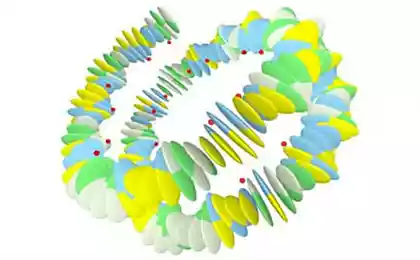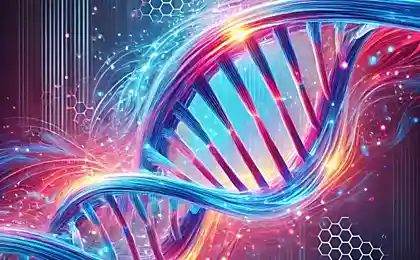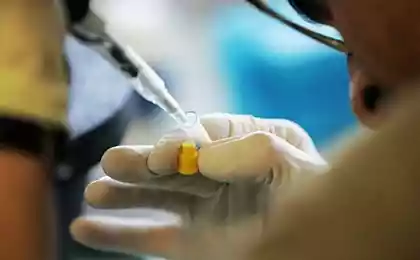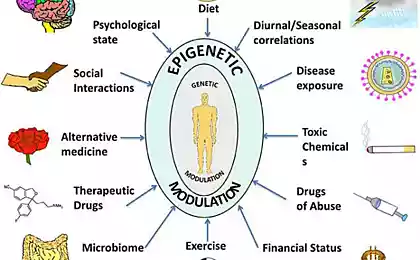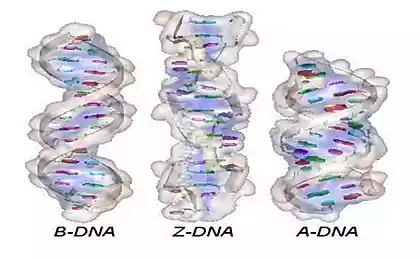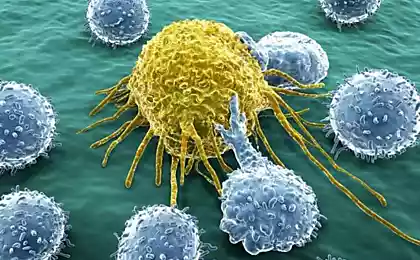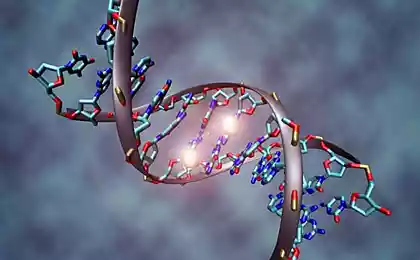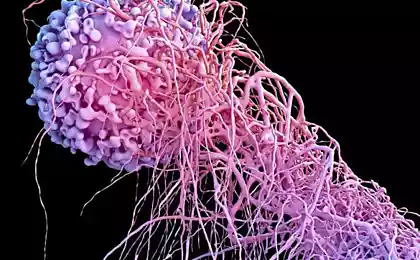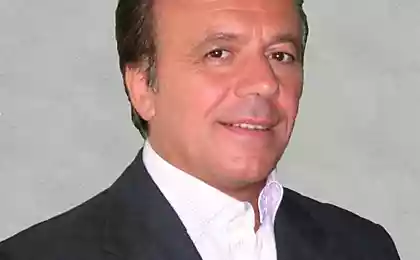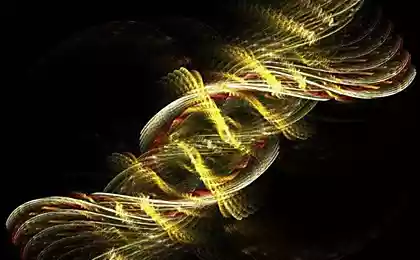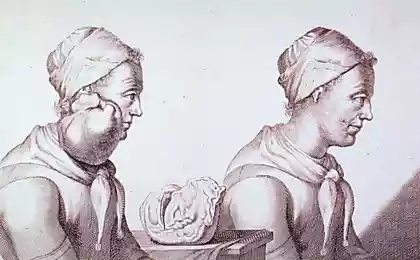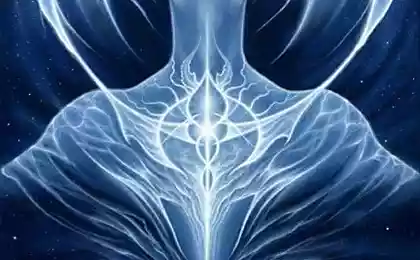518
Genetic editor for the first time "forced" cancer cells to suicide
Molecular biology first successfully applied the genomic editor CRISPR/Cas9 to inhibit the growth of cancer cells and enable their suicide, and have used it for the treatment of several mice from cancer, according to a paper published in the journal Nature Methods.
Genomic editor CRISPR/Cas9, named chief scientific breakthrough 2015, was created by American scientist Feng Zhang (Feng Zhang) and several other molecular biologists about three years ago, and since then it has undergone several upgrades that allow scientists to use it to edit the genome with absolute precision.
One of the most promising options for the use of CRISPR/Cas9, how to tell Chimin Tsai (Cai Zhiming) from the University of Shenzhen (China), is the possibility of using this editor to "fix" systems of self-destruction in cancer cells, damage to which is often the cause of the formation of the tumor and its uncontrolled breeding.

Molecular "passport"
This idea is considered by the Chinese government so promising that in July this year, the Chinese molecular biologists received permission to conduct such experiments on volunteers with an incurable form of lung cancer, which scientists try to destroy, reprogrammed their immune cells.
Tsai and his colleagues have taken the first step to implement this task successfully experienced CRISPR/Cas9 in the fight against cancer in mice, turning it into a kind of "emergency button" that respond to intracellular or artificial chemical signals and causing the cell to perform certain actions, including killing himself.
This slight modification changes the essence of CRISPR/Cas9 – it turns the editor into the electoral instrument that in the programmable bio-computer, which starts to edit DNA only at execution of some conditions, for example, the presence of special proteins defective in the cancer cells or signal molecules of the drug that are injected into the tumor by doctors.
This system works quite simply – it, instead of the usual "guide" RNA, containing the information about the edited genes, using special versions of these molecules, which block the protein Cas9, making all operations on the genome. On one end there is a plot, to which you can attach to a certain molecule drugs or protein, and unlock Cas9.
Combat DNA-editing
Moreover, such approach allows not only to kill certain cells, as the scientists explain, but to create a whole chain of logic and a kind of "bio-computers" to RNA, which will make decisions inside the body on how to treat this or that disease, or what changes in the genome at the current time and the current circumstances.
Check this system on cultures of cancer cells in vitro, a group of Cai tried to use it for cancer treatment, setting it so that the editor included at the onset of NPM protein molecules that signal the beginning of cancer development in the bladder. When Cas9 was included, he activated the so-called "squirrel-guard" p53 and p21, disabled, or inactive in cancer cells. Both of these substances are responsible for the apoptosis, the cellular self-destruct program that will be included in normal conditions when the fatal DNA damage.
What can you tell us speaking about our disease
What You did not know about epigenetics: genes and cellular memory
Their artificial inclusion, as demonstrated by experiments on mice, whose body scientists have introduced small pieces of the tumors, led to mass death of cancer cells and a sharp decrease in the size and weight of the tumor, but at the same time work CRISPR/Cas9 does not affect healthy cells, where the molecules NPM and other tumor markers are extremely rare or not present in principle.
These successes and the establishment of a system of "programming" CRISPR/Cas9, as I hope the authors will accelerate the development of cancer genomic vaccines safe for clinical use, and will help them pass the tests on animals and volunteers.published
Source: pikabu.ru/story/geneticheskiy_redaktor_vpervyie_quotprinudilquot_rakovyie_kletki_k_suitsidu_4453963
Genomic editor CRISPR/Cas9, named chief scientific breakthrough 2015, was created by American scientist Feng Zhang (Feng Zhang) and several other molecular biologists about three years ago, and since then it has undergone several upgrades that allow scientists to use it to edit the genome with absolute precision.
One of the most promising options for the use of CRISPR/Cas9, how to tell Chimin Tsai (Cai Zhiming) from the University of Shenzhen (China), is the possibility of using this editor to "fix" systems of self-destruction in cancer cells, damage to which is often the cause of the formation of the tumor and its uncontrolled breeding.

Molecular "passport"
This idea is considered by the Chinese government so promising that in July this year, the Chinese molecular biologists received permission to conduct such experiments on volunteers with an incurable form of lung cancer, which scientists try to destroy, reprogrammed their immune cells.
Tsai and his colleagues have taken the first step to implement this task successfully experienced CRISPR/Cas9 in the fight against cancer in mice, turning it into a kind of "emergency button" that respond to intracellular or artificial chemical signals and causing the cell to perform certain actions, including killing himself.
This slight modification changes the essence of CRISPR/Cas9 – it turns the editor into the electoral instrument that in the programmable bio-computer, which starts to edit DNA only at execution of some conditions, for example, the presence of special proteins defective in the cancer cells or signal molecules of the drug that are injected into the tumor by doctors.
This system works quite simply – it, instead of the usual "guide" RNA, containing the information about the edited genes, using special versions of these molecules, which block the protein Cas9, making all operations on the genome. On one end there is a plot, to which you can attach to a certain molecule drugs or protein, and unlock Cas9.
Combat DNA-editing
Moreover, such approach allows not only to kill certain cells, as the scientists explain, but to create a whole chain of logic and a kind of "bio-computers" to RNA, which will make decisions inside the body on how to treat this or that disease, or what changes in the genome at the current time and the current circumstances.
Check this system on cultures of cancer cells in vitro, a group of Cai tried to use it for cancer treatment, setting it so that the editor included at the onset of NPM protein molecules that signal the beginning of cancer development in the bladder. When Cas9 was included, he activated the so-called "squirrel-guard" p53 and p21, disabled, or inactive in cancer cells. Both of these substances are responsible for the apoptosis, the cellular self-destruct program that will be included in normal conditions when the fatal DNA damage.
What can you tell us speaking about our disease
What You did not know about epigenetics: genes and cellular memory
Their artificial inclusion, as demonstrated by experiments on mice, whose body scientists have introduced small pieces of the tumors, led to mass death of cancer cells and a sharp decrease in the size and weight of the tumor, but at the same time work CRISPR/Cas9 does not affect healthy cells, where the molecules NPM and other tumor markers are extremely rare or not present in principle.
These successes and the establishment of a system of "programming" CRISPR/Cas9, as I hope the authors will accelerate the development of cancer genomic vaccines safe for clinical use, and will help them pass the tests on animals and volunteers.published
Source: pikabu.ru/story/geneticheskiy_redaktor_vpervyie_quotprinudilquot_rakovyie_kletki_k_suitsidu_4453963


